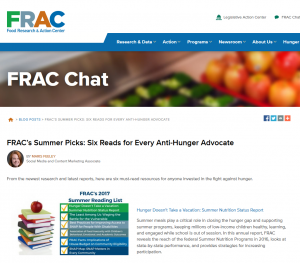We frequently share articles on our Facebook page that relate to food policy and other anti-hunger issues in some way or other, but we know that sometimes those pieces slip by in the rush of other news. That’s why we’re rounding up a handful of pieces we shared – and some that slipped by us as well – in a place you can easily find them when you have time to read them. They range from pieces on hunger in the United States to articles about how seemingly unrelated policies affect our food chain and food supply. We hope you find them useful and educational!
-
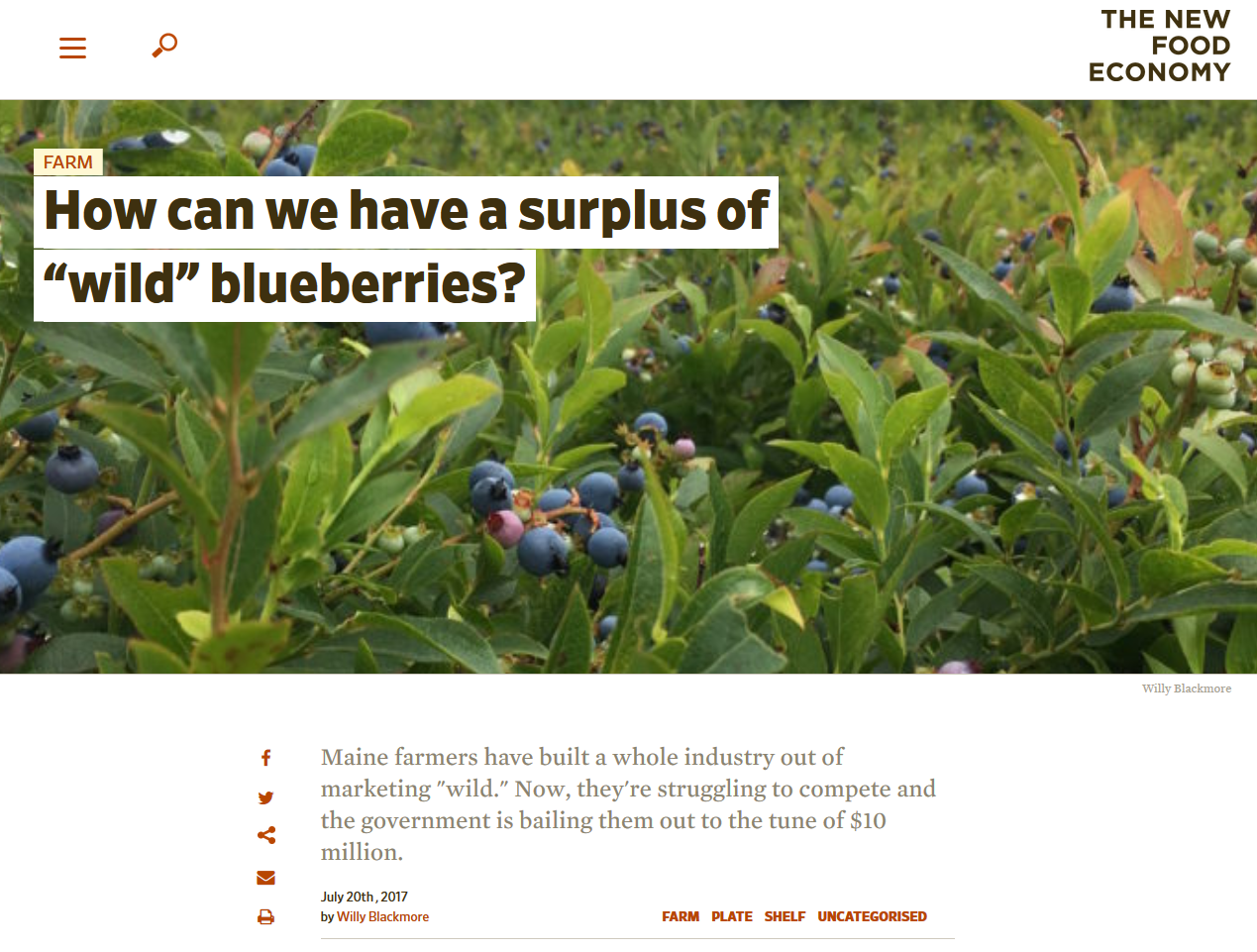 |
Federal purchases of surplus food products—from cheese to dairy to corn—is a common means of balancing out the erratic nature of agricultural markets. About 2 billion pounds of goods are purchased annually, according to the United States Department of Agriculture (USDA), and such items are used to bolster food banks, public school cafeterias, and the food operations of other charitable organizations. But when something “wild” shows up on the agency’s shopping list, it can raise some eyebrows. How can a “wild” crop be overproduced?
New Food Economy, July 20, 2017 |
-
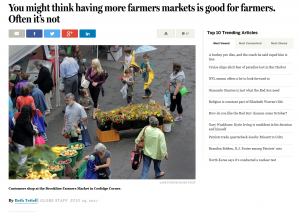 |
The multiplying markets — and other siphoning factors, such as subscription-style farm shares, where customers pay ahead for a season’s worth of produce — are making farmers rethink how they do business.
– Boston Globe, July 27 |
-
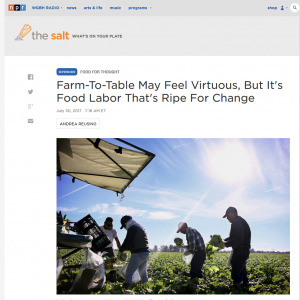 |
The ubiquity that makes farm-to-table meaningless also gives it its power. It has come to signify authenticity on almost any level, suggesting practices as complicated as adherence to fair labor standards, supply chain transparency or avoidance of GMOs. As farm-to-table has slipped further away from the food movement and into the realms of foodie-ism and corporate marketing, it is increasingly unhitched from the issues it is so often assumed to address.
– NPR, July 30, 2017 |
-
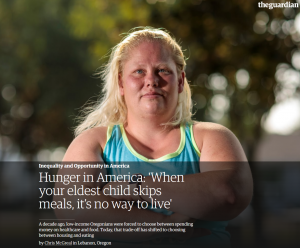 |
Kirschner said the situation was not going to get any better as rents in Oregon continue to escalate. “We know that being a renter versus a homeowner puts people particularly at risk for struggling with hunger, and the increase in rents over the past few years is just so much faster than what people can keep up with. It’s pinching the majority of families and they are living with the insecurity of knowing next year, rent is going to go up 5% or 10% or 30%, and incomes aren’t rising too much,” she said.
– The Guardian, August 11, 2017 |
-
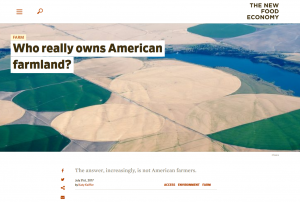 |
The new target for farmland investment: The United States. The most recent figures from USDA, dating from 2011, show that roughly 25 million acres, about 2 percent of our national total of 930,000,000 acres, are in foreign hands. And the pace of investment seems to be picking up. In the period since USDA’s 2011 report, foreign investors have gone on shopping sprees in the heartland and beyond. Saudi Arabia and the UAE alone have acquired more than 15,000 acres in Arizona and Southern California to grow fodder for dairy cattle. Italian buyers are reported to have purchased 102,000 acres in Missouri, and New Zealand some 18,000.
– New Food Economy, July 31, 2017 |
-
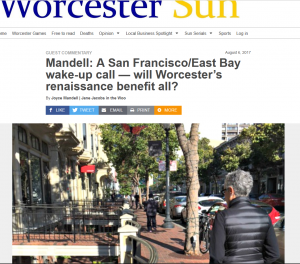 |
This article is shouting out a call-to-action: As we welcome fully the Worcester renaissance we’ve always hoped for, we need to put into place policies that ensure this emerging, trendy Worcester still maintains its greatest strengths – our affordability, diversity and funky down-home grittiness.
– Worcester Sun, August 6, 2017 |
-
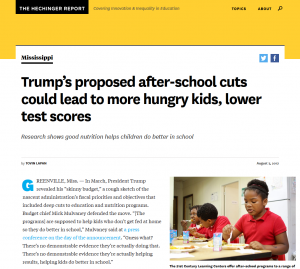 |
An array of new research has reinforced previous studies showing school meals have a profound impact on students’ academic outcomes, attendance, and overall health. Initiatives that help the most needy, either through direct financial means or programs like free school lunch, have benefits that last for decades — boosting income, health and other life outcomes. The federally funded 21st Century Community Learning Centers is one such program, offering academic help and an evening meal to mostly low-income children enrolled in underperforming schools. Under the president’s proposed 2018 budget, the program, which currently serves 1.8 million children through a $1.1 billion federal grant, would be eliminated.
The Hechinger Report, Aug 7, 2017 |
-
-
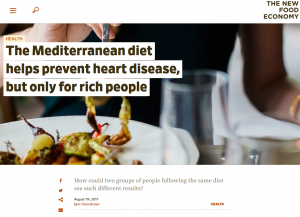 |
The researchers measured the degree to which each participant said they followed the diet and compared those numbers against overall incidence of cardiovascular disease. They found that while staying on the diet reduced heart disease by 15 percent overall, those numbers didn’t hold true for the entire population of participants. When they filtered the results by income and education level, the diet turned out to benefit wealthy people by quite a lot—and poor people, not at all.
–The New Food Economy, August 7, 2017 |
-
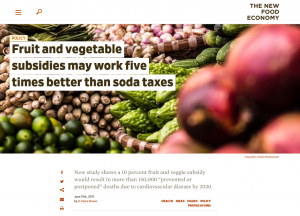 |
Turns out that subsidizing fruits and vegetables may actually work a lot better than taxing soda. That’s according to a new study funded by the National Institutes of Health and published this month in the journal PLOS ONE. Researchers found that a 10 percent produce subsidy would prevent or delay more cardiovascular deaths than a mass media campaign to promote healthy eating, a 10 percent soda tax, or a 30 percent fruit and veggie subsidy just for food stamp users.
– The New Food Economy, June 13, 2017 |

